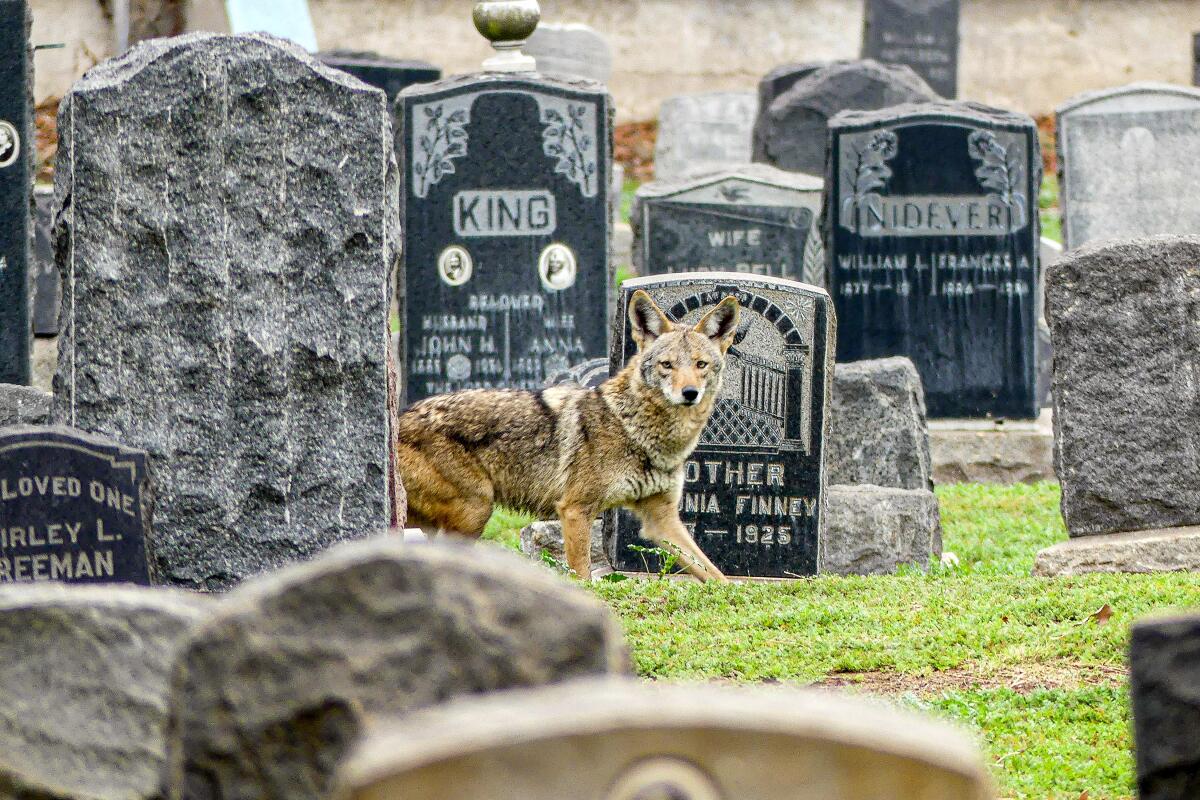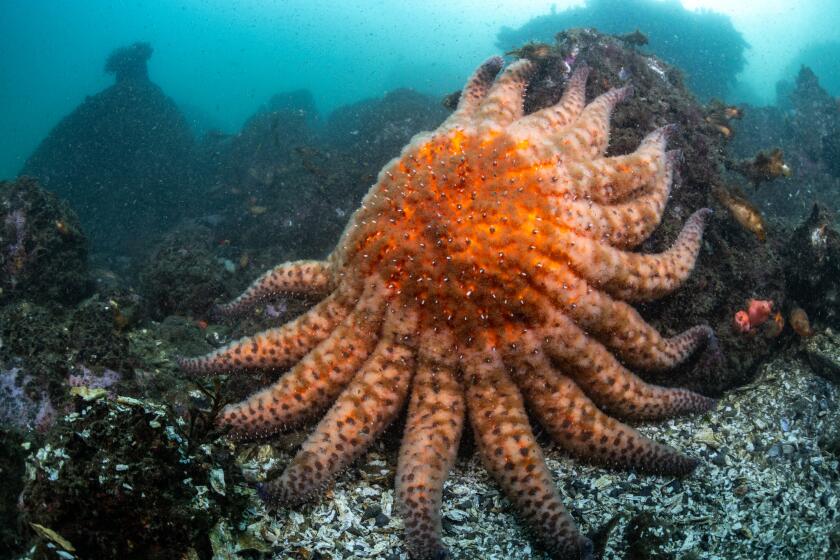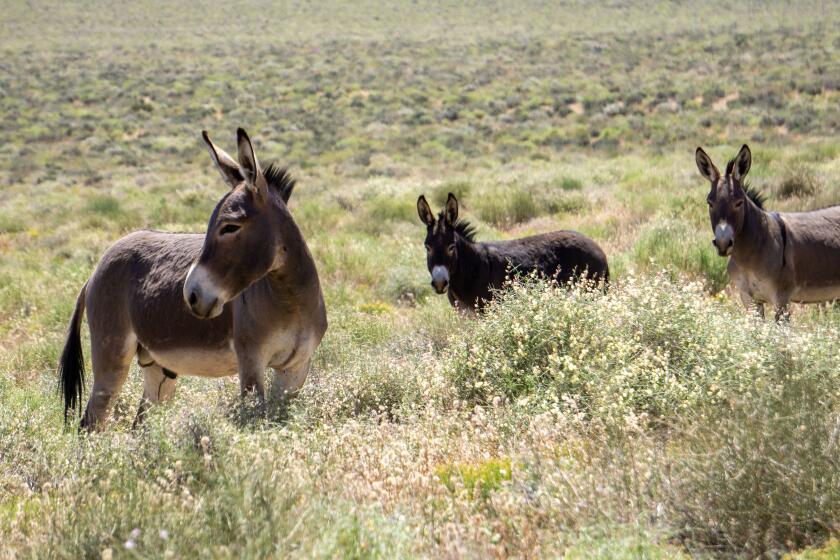In the war against coyotes, readers aren’t on the humans’ side

- Share via
If the people who write letters to The Times had their own city, the place would be a sanctuary for coyotes and other wildlife considered nuisances by so many in Los Angeles. That’s one conclusion I’ve drawn reading the outpouring of reader objections to intensifying efforts around L.A., detailed this week by Times reporter Louis Sahagun, to eradicate coyotes from the neighborhood.
This isn’t the first time readers have written in defense of the coyotes, mountain lions, bobcats and deer that were here long before the nation’s second-largest city. Articles on the Griffith Park puma P-22 often draw adulatory letters, and reports of other mountain lions killed on highways spur calls for more highway crossings to prevent the animals’ extinction from local wildlands.
So, while residents frightened by coyotes may have the ears of their City Council members, their calls to escalate the fight against coyotes don’t have much support from our readers.
————
To the editor: When a 3-year-old was killed in Glendale in 1981, I was a young lieutenant on the Glendale Police Department and was part of the initial response. That girl died because the neighborhood in which she lived engaged in the chronic feeding of coyotes.
I followed coyote attacks all across America in the following years, and feeding seemed to be inescapably linked to the habituation of certain coyotes to view humans as food sources.
The Glendale Police Department subsequently engaged in a wholesale slaughter of coyotes but soon realized that was ineffective. In the following years we designed a public education program focusing on coexistence that highlighted removing food sources and providing advice on how to make residential locations less attractive to prevent coyote foraging. I ran that program for 10 years.
That did not mean problem coyotes weren’t removed. Lethal means were in our toolkit, but only on a case-by-case basis. We also learned that the loss of a resident’s free-ranging house cat was not a valid reason to stigmatize coyotes. There are many reasons why outdoor cats are not desirable, and providing food for coyotes is just one.
Complaints and incidents declined dramatically in areas where residents did their part. The polarization depicted in The Times’ article is not productive.
Mike Post, Winnetka
..
To the editor: Although the Manhattan Beach house cat Milkshake met her demise in the jaws of a hungry urban coyote, I need to call out the pet owner, who lets her cat wander outdoors. As a resident of a foothill community, I frequently see posters of lost cats and dogs, and can only assume that most have become coyote lunches.
Cats have no business staying outdoors. The International Union for Conservation of Nature lists domestic cats as one of the world’s worst non-native species. Even well-fed cats will hunt and kill and are responsible for disrupting ecosystems in a much more profound way than coyotes do.
They are a recognized threat to biodiversity and have contributed to the extinction of 63 species of birds, mammals and reptiles in the wild. Cats in the U.S. kill between 1.3 billion and 4 billion birds annually.
Cats need to be kept indoors for their safety and longevity, and for the health of the planet.
Susan McCreary, Monrovia
..
To the editor: There is so much that’s disturbing with this article, it’s hard to know what to address within the confines of a letter.
It’s telling that Torrance City Councilman Aurelio Mattucci breaks into a smile while talking about dead coyotes not being able to reproduce. That’s ghoulish enough without his adding, “Coyotes may have been here first, but we’re here now.” This depravity of thought has been around since early settlers started massacring Native Americans.
Coyotes are here because they’re supposed to be here. It’s a violent game of God we play when we decide a sentient being no longer deserves to live. All that Mattucci’s tough talk does is shine a light on a socially acceptable form of xenophobia that for now can still be directed at non-human inhabitants of the Earth.
Timothy Viselli, La Cañada Flintridge
..
To the editor: It is so sad when people are anti-nature. Coyotes, raccoons, possums, mountain lions — let’s respect them and learn to coexist. A few bad encounters with humans shouldn’t doom a whole species.
Far more dangerous than these, after humans, are domestic dogs that kill a number of people each year. Coyotes, under constant persecution, are at the pinnacle of survival.
Patricia LoVerme, South Pasadena
..
To the editor: As someone who lives across the street from Point Mugu State Park, I have had a front-row view of many coyotes over the years. We see them often multiple times a day and coexist peacefully, although we have lost cats. Like the Manhattan Beach resident in your article, we took a chance letting our cats out, and it didn’t end well.
The difference is we blame ourselves, not the coyotes.
My 16-year-old Maine Coon is still among the living because I learned my lesson; she stays in the house or supervised in the yard. If a cat insists on going out, build or buy a cat playpen. The birds will appreciate it too.
And to enlist the help of the heartless group Evict Coyotes when coyotes cross human-made boundaries or take our cats is just plain wrong.
Jocelyn DeVault, Newbury Park
More to Read
A cure for the common opinion
Get thought-provoking perspectives with our weekly newsletter.
You may occasionally receive promotional content from the Los Angeles Times.







